The sunny island of Kos is located in the Aegean Sea and is small – 50 km long and 10 km wide. So you can explore it on your own or take advantage of the rich offer of optional trips around Kos. The island offers beautiful, sandy beaches, tourist beaches and wild, charming bays with crystal clear water. Kos is a perfect destination for a successful holiday during which you can combine lazy sunbathing and visiting monuments.

Situated on the northeastern coast, Kos Town is the capital of the island of Kos. The Old Town is teeming with life and reflects the rich history of the island at every turn: on the streets, in buildings, in markets, parks and squares. In the center, visitors can see Byzantine and Ottoman ruins and many other interesting tourist attractions!
Lambi Beach
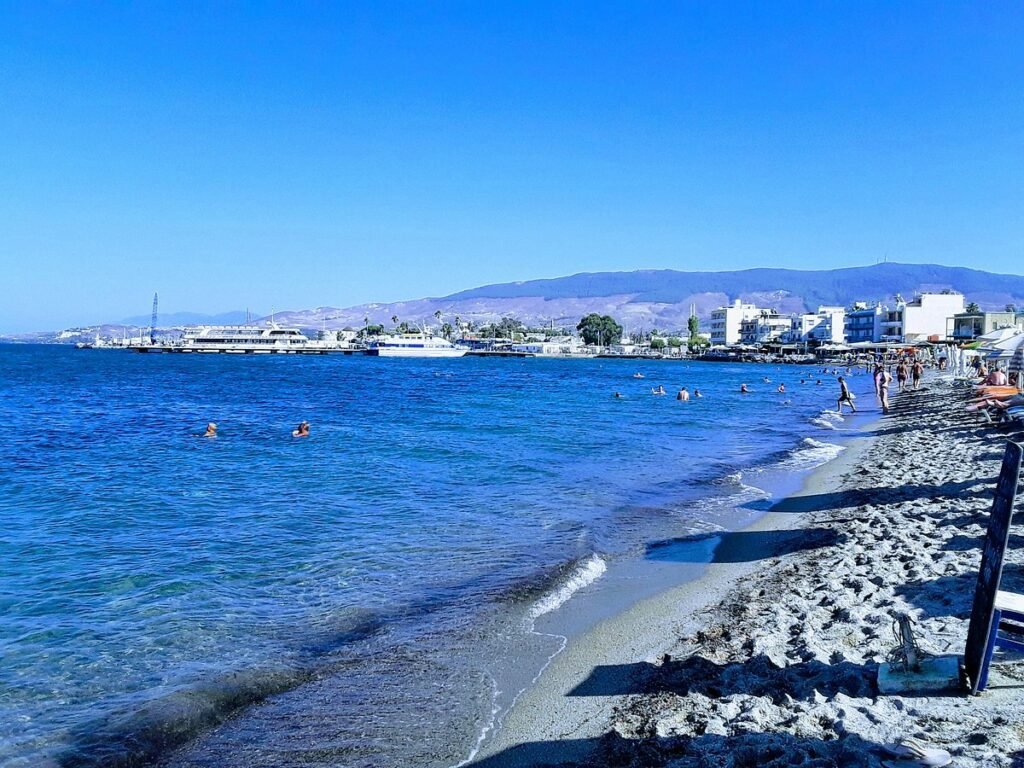
Lambi Beach, located 20 minutes walk from Kos Town center. A beautiful sand and shingle beach, 1 km long, stretching north from the port. The beach gently slopes into the sea, so it is ideal for families with children, it is also a good place for diving, and there are many restaurants, cafes and beach bars. Boat trips to the neighboring islands of Pserimos, Nisyros and Kalymnos are organized.
Palm Tree Avenue
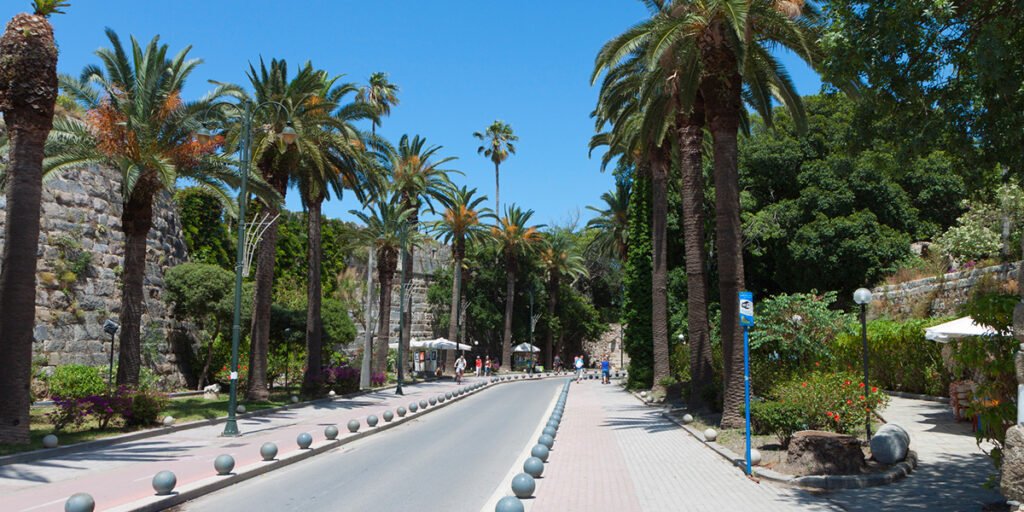
The eastern side of the harbor, it’s connected to the rest of the town by a bridge that crosses the famous Palm Tree Avenue. The palm tree avenue is one of the most famous landmarks of the island of Kos. It passes right under the bridge that gives access to the castle of the Knights. Walking along the main picturesque paved road, you will encounter many cafes, taverns, restaurants, and shops.
Hippocrates plane tree
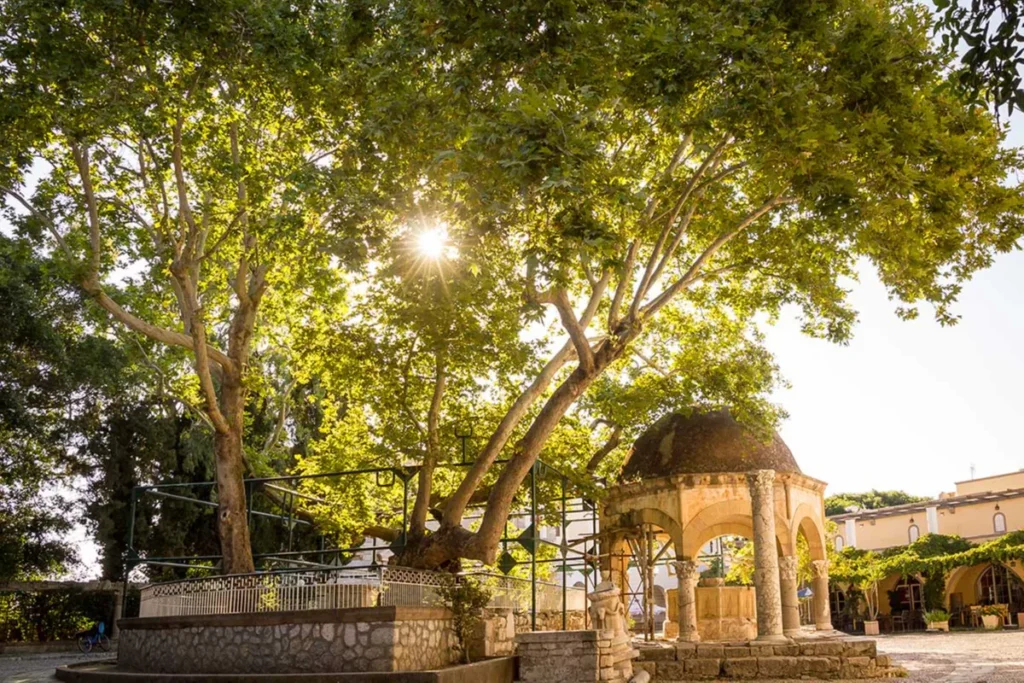
The Tree of Hippocrates in Kos: Legend has it that Hippocrates taught his students under the shade of this tree around 2400 years ago. The current tree is believed to be a descendant of the original, as plane trees can live for several centuries and propagate through cuttings. The site is a significant landmark on the island of Kos, attracting both tourists and medical professionals who come to pay homage to the legacy of Hippocrates.
Roman Odeon of Kos
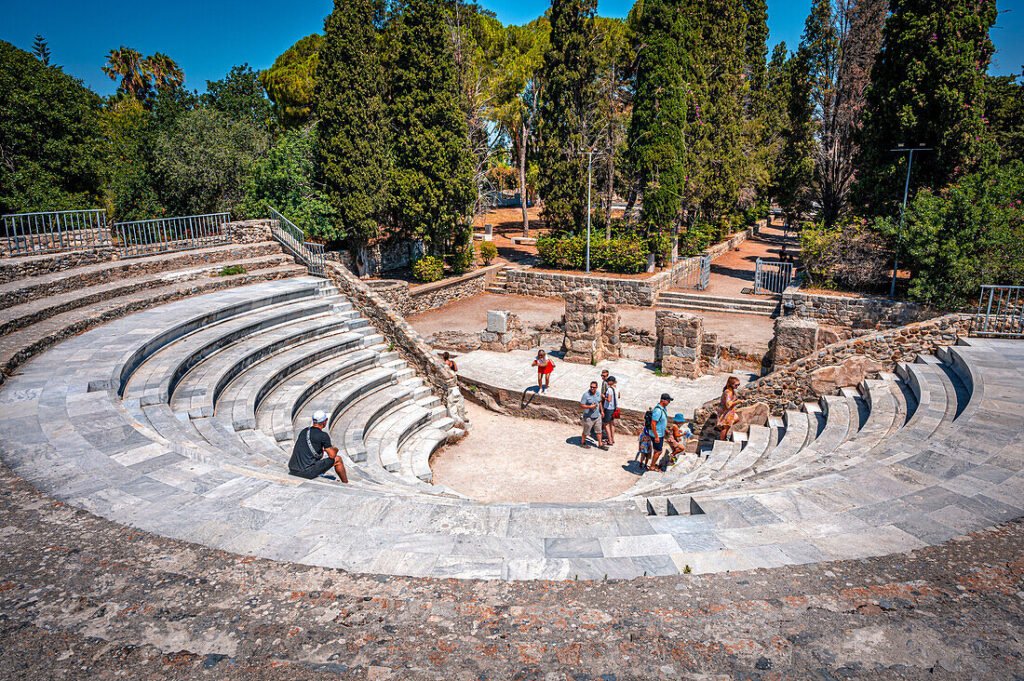
One of the most important historical attractions of Kos, the Roman Odeon. It is located south of the western archaeological site and was built between the 1st and 2nd centuries AD and was intended to serve as a place for musical entertainment. It also served as the seat of the Senate, the public body of Kos.
Nerantzia Castle
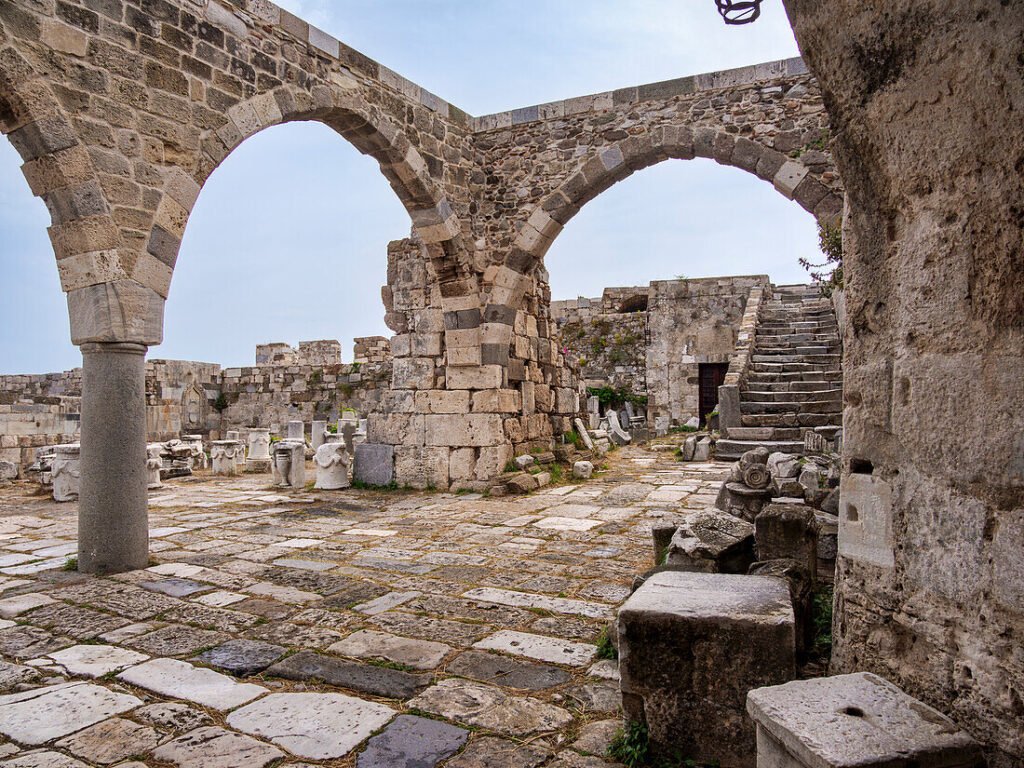
Narnia Castle is an iconic building in Kos. Built by the Hospitallers in the 14th century, the castle served as a defensive fortress against invading forces. Today it is an important historical site and a popular tourist attraction.
The castle’s impressive walls and towers offer panoramic views of the city and surrounding area. Visitors can explore the interior, which houses a variety of exhibits and exhibitions depicting the history of the castle and the island. Medieval and Ottoman architecture adds charm to the city.
Ancient Agora

The Kos Ancient Agora contains a series of ruins dating from the fourth century BC to the sixth century AD. Amongst them are a temple, probably dedicated to Hercules, a shrine to Aphrodite and the columns of a stoa or covered walkway dating from the third century BC.
Casa Romana

Casa Romana (Roman Villa) is a restored Roman house located on Grigoriou Pemptou Street. with three impressive atriums and spacious halls with preserved frescoes, mosaics and marble floors. Its rooms contain representative examples of pottery, coins, glassware and sculpture that typically decorated Roman residences.
Port of Kos

Kos has a high-standard modern marina that can accommodate private pleasure craft of between 7 and 50 meters. Kos Marina is located just 1 mile southwest of the city’s main harbor and boasts 8 piers and a total of 250 docking berths and 150 dry dock slots.
Kos Old Town
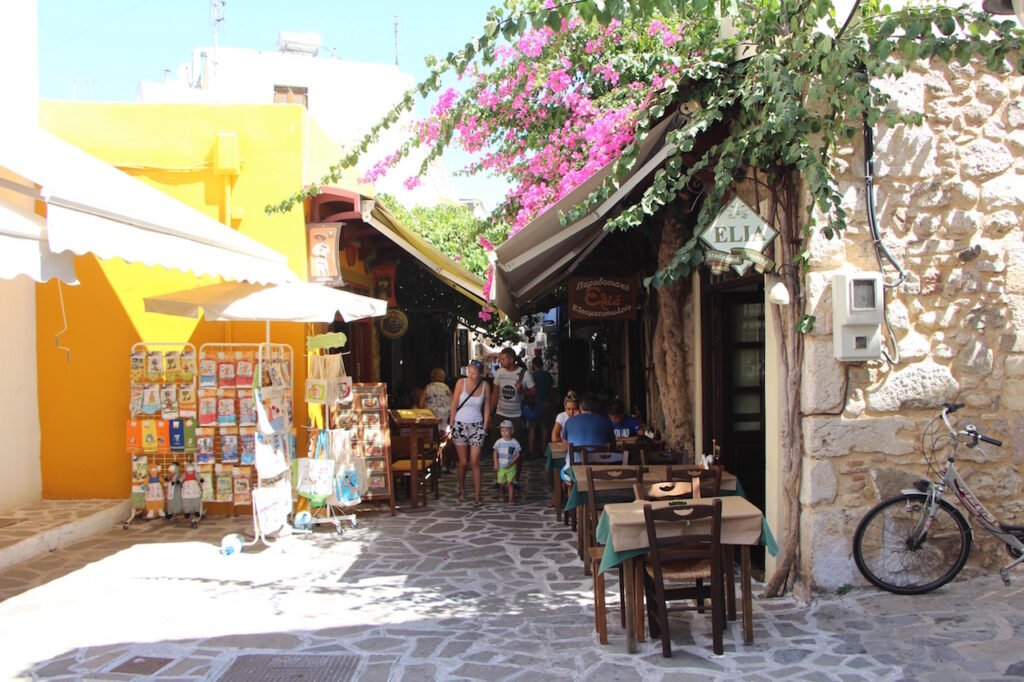
The old town centre of Kos is a testament to the rich history of the Greek island. Amidst this historical backdrop, the old town is a lively place that attracts visitors.
The Old Town of Kos is a pedestrian-only narrow street from Freedom Square to Diagoras Square, near Kos Harbour. The entire street is brimming with cafes, bars, restaurants, and souvenir shops. The buildings are a beautiful amalgamation of Ottoman, Byzantine and modern architecture, all in the shade of blooming bougainvilleas.
Mosque of Gazi Hasan Pasa (Loggia)

Located in the heart of Kos, the Loggia Mosque was built in the 18th century. Ottoman influence is evident with elegant arches and intricate details that catch the eye of every visitor. As you approach the mosque, the serene atmosphere and stunning facade invite you to explore further. Although the mosque is no longer actively used for prayers, it serves as an important historical landmark and popular tourist attraction.
Archaeological Museum
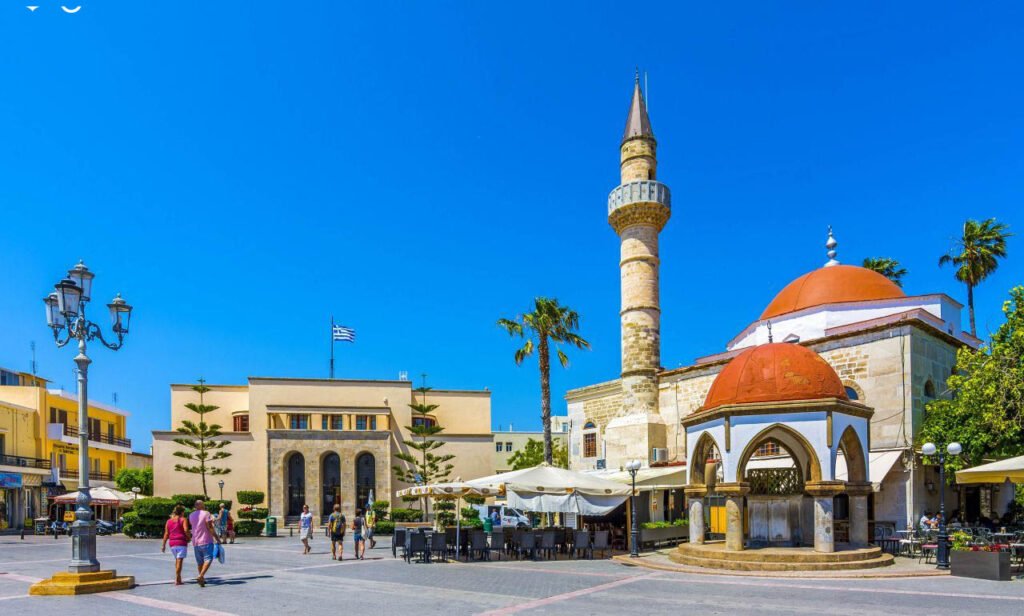
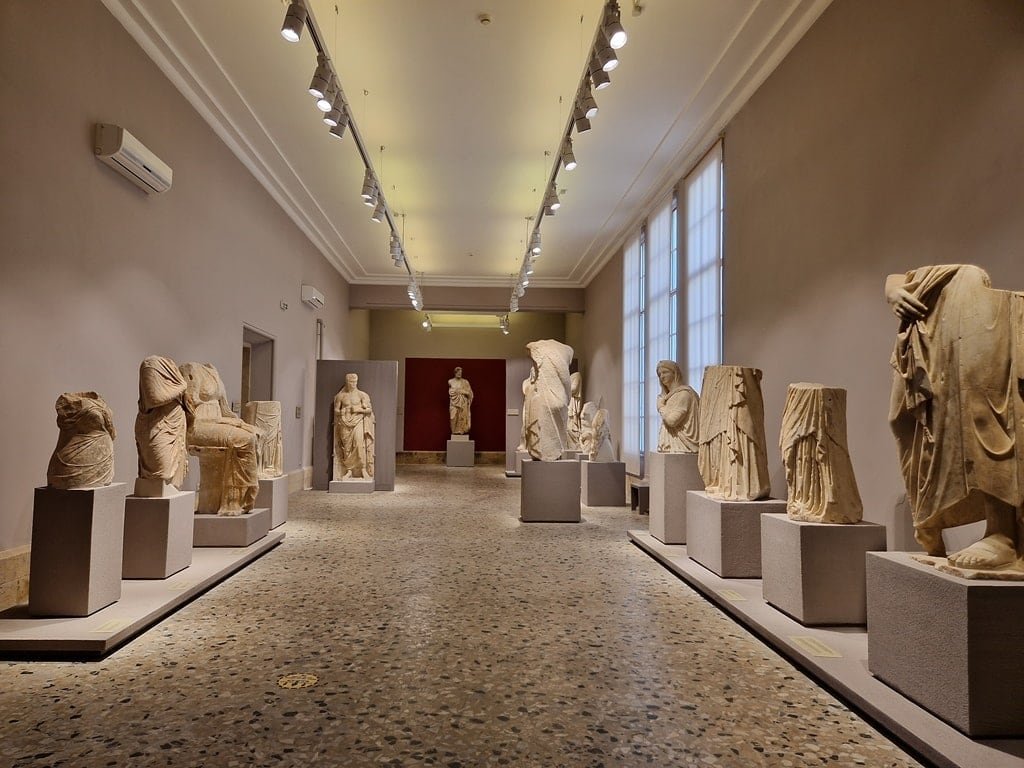
The Archaeological Museum of Kos preserves and exhibits finds brought to light during various excavations on the island from the beginning of the last century. Mainly from the archaeological site of the Market Square and the Western archaeological site, as well as from individual monuments such as the Altar of Dionysus, the Odeon and the Roman Residence (Casa Romana).
Municipal Market Of Kos


The Municipal Market of Kos is a small indoor municipal market on the edge of Eleftherias square, opposite the archaeological Museum. In the Municipal Market of Kos, you will find a lot of fresh fruit along with dried fruit (figs, apricots ets) and loads of local products and different kinds of herbs and spices. There are plenty of potential gift ideas and souvenirs to be considered but the local honey and olive oil are probably among the most traditional and typical products that you could purchase.
